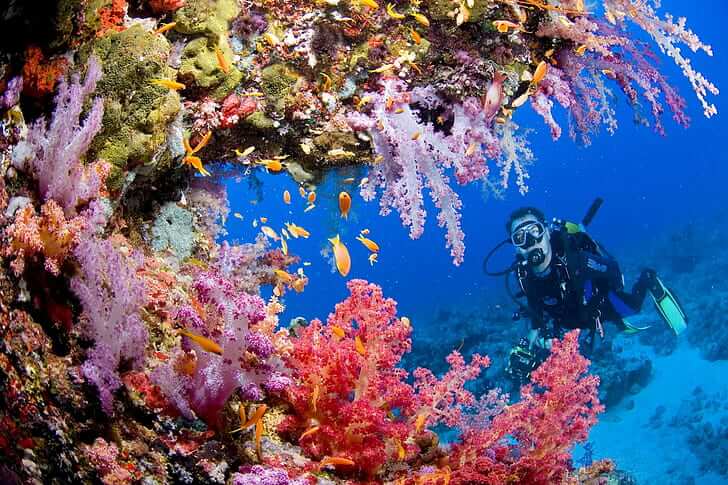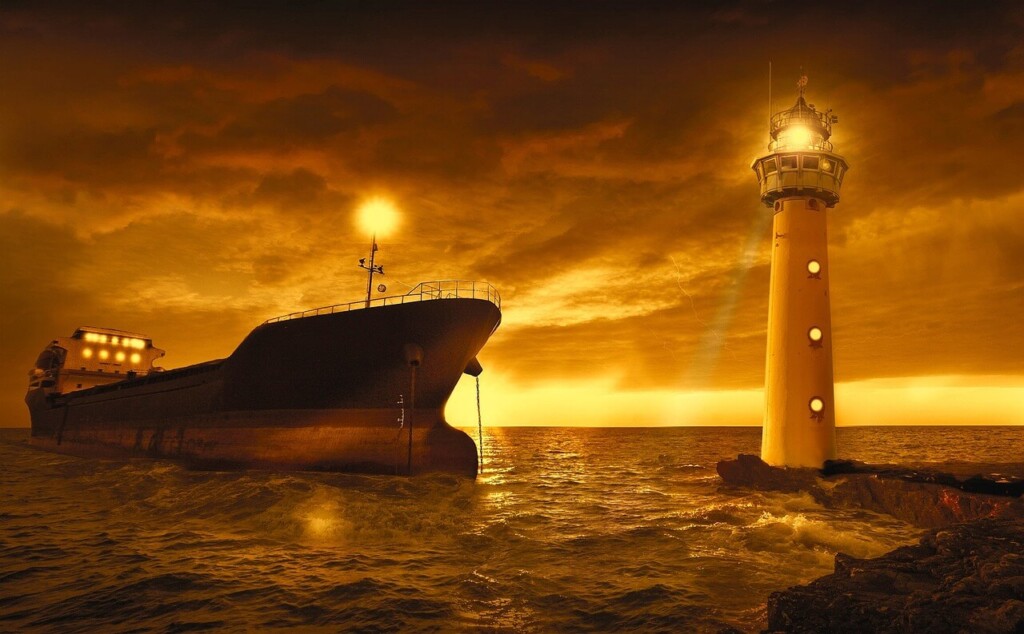“The oceans are the beating blue heart of our planet. Their fate is not merely an environmental concern—it is a deeply human one. Our survival, our food, our climate, and our future all depend on the health of our oceans. To protect them is to protect ourselves.”

Oceans have an incalculable impact on life on Earth. They contain approximately 97% of all water on Earth and cover more than 70% of Earth’s surface. Oceans are by far the largest reservoir of Earth’s water, making them the dominant force in Earth’s water cycle and climate system. Oceans are the foundation of our lives and human existence. They regulate our climate, generate the oxygen we breathe, feed billions, and connect continents. From regulating climate and weather to supporting biodiversity and global economies, oceans are crucial for the survival and well-being of humanity. Oceans are the invisible lungs of the planet. Every second breath we take comes from the ocean.
The lesson learnt is that – oceans do not need us. We need the ocean. Still we often take them for granted.
Climate regulation and weather systems

One of the most significant ways oceans influence our lives is through climate regulation. Oceans absorb about 90% of the heat generated by greenhouse gas emissions and nearly 25–30% of human-made carbon dioxide.
Ocean currents like the Gulf Stream or the El Niño-Southern Oscillation (ENSO) redistribute heat across the planet. This affects everything from rainfall in India (monsoons) to hurricanes in the Atlantic. Ocean temperatures and circulation patterns have a direct effect on agriculture, water availability, and disaster frequency. In the long run, oceans also help slow the pace of climate change and act as a buffer against global warming—affecting millions of lives.
Source of Oxygen and Carbon sink
Marine photosynthetic organisms such as phytoplankton, seaweed, and algae produce at least 50% of the Earth’s oxygen, more than the Amazon rainforest. These microscopic organisms form the base of the oceanic food web and play a vital role in sequestering carbon. Without healthy oceans, our atmosphere would be choked with carbon dioxide, and breathable oxygen levels would drop drastically.
Food security and nutrition

Oceans are a critical source of protein for over 3 billion people globally. Fish and shellfish provide essential nutrients like omega-3 fatty acids, iodine, selenium, and vitamins A and D. Small-scale fisheries and aquaculture not only supply food but also employment for millions, especially in coastal and island nations.
However, overfishing and marine pollution are threatening this resource. Unsustainable practices have led to the collapse of key fish stocks, jeopardizing food security for vulnerable populations. Protecting marine biodiversity through sustainable fisheries management is vital for ensuring long-term nutritional security.
Livelihoods and the blue economy

The term “blue economy” refers to the sustainable use of ocean resources for economic growth, improved livelihoods, and jobs. According to the OECD, ocean-based industries contribute over $1.5 trillion annually to the global economy and are expected to double by 2030. The prominent industries in this sector include coastal tourism, fisheries, maritime transport, and offshore energy.
Fisher folk, tourism workers, port operators, shipping companies, and renewable energy industries all rely on healthy marine ecosystems. Coral reefs, for instance, attract millions of tourists every year and contribute billions to the GDPs of nations like Indonesia, Australia, and the Maldives.
Biodiversity hotspots

Oceans are home to an estimated 2.2 million species, from microscopic plankton to the majestic blue whale. Coral reefs, mangroves, and seagrass beds are among the most diverse ecosystems on Earth. Biodiversity in the ocean supports not just ecological balance but also biomedical innovation—many life-saving drugs have been derived from marine organisms, including treatments for cancer, Alzheimer’s, and bacterial infections.
When ocean ecosystems collapse due to human activity—be it plastic pollution, oil spills, or acidification—this rich biodiversity is lost, often irreversibly.
Protection from natural disasters
Coastal ecosystems like mangroves, coral reefs, and salt marshes act as natural barriers against disasters. During events like tsunamis, hurricanes, and storm surges, these ecosystems absorb much of the impact, protecting inland areas and saving lives. For instance, during the 2004 Indian Ocean tsunami, coastal regions with healthy mangrove forests suffered significantly less damage than those where mangroves had been cleared.
Investing in the conservation and restoration of such natural infrastructures can be far more cost-effective and sustainable than building concrete seawalls.
Cultural and spiritual significance
For many indigenous and coastal communities, the ocean is more than a resource—it’s a part of their cultural identity, heritage, and spirituality. Pacific Islanders view the ocean as a living ancestor. In Japan, fishermen hold ceremonies to honour the sea’s bounty. Indian epics reference the “Samudra Manthan,” and sacred rivers flow into the sea, symbolizing the cycle of life and purification.
This deep connection with the sea often guides sustainable practices passed down over generations. Recognizing and integrating traditional knowledge into ocean governance can strengthen conservation efforts.
Innovation and science

The oceans are an unexplored frontier—we know more about the moon than the deep sea. With advancements in marine technology, we are beginning to uncover the secrets of oceanic trenches, hydrothermal vents, and vast undersea mountain ranges.
Ocean exploration has led to innovations in biotechnology, medicine, robotics, and renewable energy. For example, wave and tidal energy could become major clean power sources in the future. Moreover, understanding how marine life survives in extreme conditions may offer clues for life on other planets or help us design resilient infrastructure.
Global trade and connectivity

Over 90% of global trade is conducted via sea routes. Ports and shipping lanes are vital arteries of the global economy. From crude oil and iron ore to electronics and food, almost everything we use is transported across the oceans.
Disruptions to this system—due to piracy, accidents like the blockage in the Suez Canal, or geopolitical tensions—can have cascading impacts on prices, supply chains, and employment. Ensuring safe and open sea lanes is a strategic imperative for all nations.
Recreation, mental health, and tourism

Beaches, cruises, scuba diving, and whale watching are not just about fun—they’re multibillion-dollar industries. Moreover, being near the ocean is proven to have positive effects on mental health, reducing stress and anxiety. This is often referred to as the “blue mind” effect.
Marine tourism supports jobs in hospitality, guides, equipment rentals, and conservation programs. However, mass tourism also comes with risks like coral damage, littering, and overdevelopment—hence the need for eco-tourism models.
Oceans and the SDGs
Oceans are directly tied to United Nations Sustainable Development Goal 14: Life below Water, which calls for the conservation and sustainable use of oceans, seas, and marine resources. But oceans also intersect with other SDGs:
Zero Hunger (SDG 2): through sustainable fisheries.
Climate Action (SDG 13): by acting as a carbon sink.
Clean Water (SDG 6): via the role of oceans in the water cycle.
Decent Work and Economic Growth (SDG 8): by supporting livelihoods.
Without healthy oceans, progress on many global goals will be stalled or reversed.
Challenges to Ocean health

Despite their importance, oceans face grave threats:
- Plastic Pollution: Over 11 million tons of plastic enter the ocean annually.
- Acidification: CO₂ absorption lowers pH levels, harming shellfish and coral.
- Overfishing: 1/3 of fish stocks are overexploited.
- Dead Zones: Caused by nutrient runoff from agriculture, leading to oxygen-depleted waters.
- Oil Spills and Deep-Sea Mining: Result in irreversible ecological damage.
These threats are not isolated—they compound one another and have cascading effects on food security, economies, and climate.
What can be done?

1. Sustainable fishing and aquaculture
Stronger policies, quotas, and enforcement are needed to curb overfishing. Innovations in sustainable aquaculture can reduce pressure on wild stocks.
2. Marine protected areas (MPAs)
Protecting at least 30% of oceans by 2030 is a key global target. MPAs help restore fish populations, biodiversity, and ecosystem balance.
3. Reducing plastic use
Individuals can avoid single-use plastics, while governments can enforce bans, incentivize recycling, and support biodegradable alternatives.
4. Ocean literacy and education
Public awareness campaigns and school curriculums must highlight ocean issues. An informed population is more likely to support ocean-friendly policies.
5. International cooperation
Oceans do not respect national boundaries. Agreements like the UN High Seas Treaty (2023) aim to regulate activities beyond national jurisdictions, offering hope for the future.
Conclusion

The oceans are the beating blue heart of our planet—powerful, mysterious, and indispensable. They influence weather, feed billions, support economies, nurture biodiversity, and connect cultures. But they are not invincible. Human activity has pushed ocean systems to the brink.
The fate of the oceans is not just an environmental concern—it is a human one. Our survival and prosperity are inextricably linked to the health of our oceans. Recognizing their importance is the first step. The next is action—individual, collective, and political. As stewards of this planet, we must protect the oceans so they can continue to sustain life for generations to come.


[…] Also Read: We need the oceans, more than they need us… […]